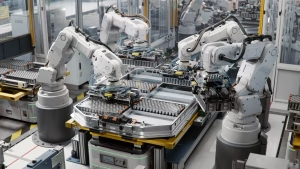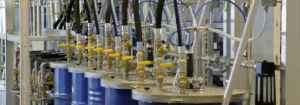Updated: September 10, 2025
Choosing the right motor for mixing applications is critical for efficiency, reliability, and product quality. Whether you’re working with food, chemicals, paints, or pharmaceuticals, selecting the correct motor ensures smooth operation and reduces costly downtime.
This guide will help you understand the different types of motors for mixing, the key factors to evaluate, and how to make the best choice for your specific application.
Understanding Your Mixing Needs
Before deciding on a motor, consider the following factors:
Viscosity of the substance
Low-viscosity liquids (e.g., lubricants) require lower torque.
High-viscosity materials (e.g., adhesives, paints, or pastes) require motors with higher torque.
Mixing speed
Fast-paced mixing → High-speed motors.
Gentle mixing → Lower-speed, controlled motors.
Volume of the mixture
Larger vessels demand more torque to overcome resistance.
Operating environment
Exposure to chemicals, dust, or moisture affects motor design.
For example, corrosive environments require motors built with protective materials.
Types of Motors for Mixing
1. AC Induction Motors
Best for: General-purpose mixing applications.
Advantages: Simple, durable, cost-effective, and easy to maintain.
Typical use: Large-scale mixing where precision is less critical.
2. DC Motors
Best for: Applications requiring precise speed control.
Advantages: Variable torque and smooth speed adjustment.
Typical use: Laboratory mixers, small-batch food processing.
3. Gear Motors
Best for: Heavy-duty mixing of viscous substances.
Advantages: Reduce speed while boosting torque.
Typical use: Industrial mixers for paints, adhesives, and chemicals.
4. Servo Motors
Best for: Automated systems needing high accuracy.
Advantages: Fast response, precise speed control, and reliability.
Typical use: Robotics-driven mixers, pharmaceutical production, high-tech applications.
Key Factors to Consider
When choosing a mixing motor, evaluate these core elements:
Torque → Must match the viscosity and volume of the mixture.
Speed (RPM) → Should meet the mixing requirements of the process.
Efficiency → Energy-efficient motors reduce costs and environmental impact.
Durability → Motors should withstand continuous operation in demanding environments.
Maintenance → Choose motors with accessible spare parts and easy servicing.
Additional Considerations
Motor Enclosure: Protects against dust, water, or chemicals. (e.g., IP65 for dusty/wet areas, IP67 for immersion).
Control System Compatibility: Ensures the motor integrates smoothly with your automation or manual control setup.
Noise Levels: Low-noise motors improve workplace comfort and meet regulatory requirements in sensitive environments.
Why Air Motors Are a Unique Choice for Mixing
While many applications use electric or gear motors, air motors (pneumatic motors) are a valuable alternative:
Spark-free operation → Ideal for flammable or hazardous environments.
Compact and lightweight → Suitable where space is limited.
Variable speed and torque → Adaptable to different mixing requirements.
Resistant to overload and heat → Durable under continuous or intermittent use.
This makes air motors a preferred option for industries such as food processing, pharmaceuticals, and chemicals where safety and flexibility are top priorities.
Conclusion
Selecting the best motor for mixing depends on viscosity, speed, volume, and environment. From reliable AC motors to high-precision servo motors and versatile air motors, the right choice ensures efficient, safe, and cost-effective operations.
If you’re exploring air motors for mixing applications, our team can help you evaluate the right setup for your needs.
The Best Motor for Mixing FAQ
Gear motors or high-torque air motors are best suited for mixing heavy, viscous materials like adhesives or paints.
DC motors provide precise speed control, making them ideal for laboratory mixers and small-scale applications where accuracy matters.
Yes. Air motors are spark-free, durable, and adjustable in speed/torque, making them excellent for hazardous or variable mixing environments.
The right enclosure protects against dust, moisture, or chemical exposure, ensuring motor durability and compliance with safety standards.
AC motors are cost-effective and reliable for general tasks, while servo motors are ideal for automated systems requiring precision and responsiveness.


